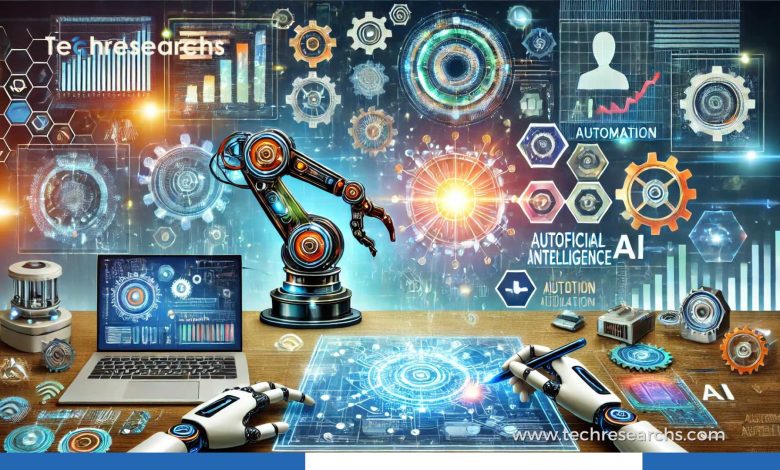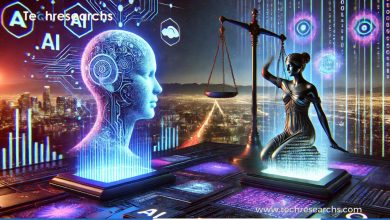Automation Trends in the Digital Age: Opportunities and Challenges

Automation has become an integral part of modern business operations. As technology advances, automation trends continue to evolve, shaping industries, driving efficiency, and optimizing productivity. These trends in automation are transforming the digital age, presenting both exciting opportunities and significant challenges for businesses and individuals alike. In this article, we will explore the key automation trends, their impact on industries, and the challenges organizations face while embracing automation.
The Rise of Intelligent Automation Trends
Intelligent automation (IA) combines artificial intelligence (AI), machine learning, and robotic process automation (RPA) to perform tasks that typically require human intervention. As businesses seek to optimize processes, reduce costs, and improve productivity, IA is becoming a game-changer. By leveraging AI to learn and adapt over time, businesses can automate complex decision-making processes that were previously impossible with traditional automation tools.
Key Benefits of Intelligent Automation
- Increased operational efficiency
- Enhanced customer experience
- Cost savings
- Reduced human error
With intelligent automation, companies can achieve higher levels of accuracy, efficiency, and scalability, paving the way for innovations across various sectors.
Robotic Process Automation (RPA): A Core Component
Robotic Process Automation is one of the most well-known automation trends in the digital age. RPA refers to the use of software robots or “bots” to automate repetitive and rule-based tasks. These tasks typically include data entry, invoice processing, and customer service inquiries. By eliminating mundane tasks, RPA allows employees to focus on more strategic and creative work, boosting overall productivity.
Industries Embracing RPA
- Financial Services
- Healthcare
- Manufacturing
- Retail
RPA is increasingly seen in industries that rely heavily on data and documentation. By automating these processes, companies can improve workflow efficiency and minimize operational bottlenecks.
AI-Powered Automation: Transforming Customer Service
Artificial intelligence plays a pivotal role in transforming customer service through automation. AI-powered chatbots and virtual assistants are now capable of handling a wide range of customer queries without human intervention. These technologies use natural language processing (NLP) to understand and respond to customer inquiries in real-time, providing a seamless experience for users.
Benefits of AI in Customer Service Automation
- 24/7 availability
- Quick response times
- Improved customer satisfaction
- Reduced operational costs
AI-driven customer service tools are not only enhancing customer engagement but also enabling businesses to operate more efficiently by managing high volumes of customer interactions at scale.
Automation in Supply Chain Management
Supply chain management is another area where automation is making significant strides. Automation technologies like predictive analytics, Internet of Things (IoT) devices, and autonomous vehicles are revolutionizing supply chains. These innovations allow companies to track inventory, predict demand, and optimize delivery routes, improving overall supply chain performance.
How Automation is Enhancing Supply Chain Efficiency
- Streamlined inventory management
- Real-time tracking and monitoring
- Faster and more accurate deliveries
- Improved forecasting accuracy
By embracing automation in supply chain management, companies can achieve greater agility, reduce operational costs, and ensure timely deliveries to customers.
The Challenges of Automation
While automation presents numerous opportunities, it also comes with its own set of challenges. Businesses need to consider the following when adopting automation technologies:
1. Workforce Displacement
One of the most significant concerns about automation is the potential loss of jobs due to robots and AI replacing human workers. However, automation also creates new job opportunities, particularly in areas like data analysis, AI development, and system maintenance.
2. High Initial Investment
Adopting automation technologies can be costly, especially for small businesses. The initial investment in software, hardware, and training can be a barrier for organizations looking to implement automation solutions.
3. Data Security Risks
Automation involves the handling of sensitive data. As automation systems collect and process large amounts of data, businesses must prioritize cybersecurity to prevent breaches and ensure compliance with privacy regulations.
Embracing Automation for Future Growth
Automation trends are rapidly evolving, offering significant benefits to businesses and industries worldwide. However, companies must weigh the opportunities against the challenges, especially in terms of workforce displacement, cost, and security. As intelligent automation and AI continue to grow, organizations that adopt these technologies can position themselves for long-term success, driving innovation, efficiency, and customer satisfaction in the digital age.
FAQs
1.What is intelligent automation (IA)?
A. Intelligent automation combines AI, machine learning, and RPA to automate complex tasks and decision-making processes. It enhances operational efficiency and reduces human error.
2.How does robotic process automation (RPA) work?
A. RPA uses software bots to automate repetitive and rule-based tasks, improving efficiency and allowing employees to focus on more strategic activities.
3.What industries are benefiting from automation trends?
A. Industries like finance, healthcare, manufacturing, retail, and supply chain management are embracing automation to streamline processes and reduce costs.
4.What are the challenges of automation?
A. Challenges include workforce displacement, high initial investment costs, and data security concerns. However, automation also creates new job opportunities and business growth potential.
More TechResearch’s Insights and News
Computer Vision in AI: Enhancing Automation & Security
Robotic Process Automation (RPA): Everything You Need to Know – TechResearchs



